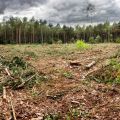First example of a stable beryllium-beryllium bond synthesised
15 June 2023
In a study published today in Science, chemists from the University of Oxford explain how they have prepared the first stable compound containing a chemical bond between two beryllium atoms. The compound the Oxford team has synthesised, diberyllocene, is stable both as a solid and a vapour, and the Be–Be bond has been unambiguously established using X-ray crystallography.
Beryllium, element number four in the Periodic Table, is the second lightest metal, but its chemistry is the least well-developed of all non-radioactive elements. Chemists and physicists have tried to synthesize Be–Be bonds for more than 100 years, but they have remained elusive. Only recently have fleeting, highly unstable Be–Be interactions between beryllium atoms in the gas phase been detected.
The molecule the Oxford team have prepared in this study, diberyllocene, has itself been the subject of many experimental and theoretical studies over the past fifty years. This is the first time it has been synthesised, in a great leap forward in main group chemistry. The fact that it has taken so long to validate such a fundamental bonding interaction (a missing link in the element–element bonds in the second row of the Periodic table) had led chemists to question whether it was even possible, despite theoretical support for its feasibility.
Dr Josef Boronski (Department of Chemistry, University of Oxford), the lead author of the study, said: ‘As beryllium is such a light element, its chemistry is idiosyncratic and often incomparable to that of other metals. It has been such a privilege to get the first glimpse of an unseen facet of this element. Although there have been numerous unsuccessful attempts to prepare diberyllocene, given beryllium’s capacity to form highly covalent bonds we’re finding that the beryllium-beryllium bond is rather strong. However, diberyllocene is still an extremely reactive molecule and I’m sure a thorough exploration of its chemistry will yield many surprising results.’
The team have shown that diberyllocene is stable in the solid state and (when heated) in the vapour phase. Given the many unsuccessful previous attempts to prepare beryllium-beryllium bonds, the stability of the compound itself is remarkable and means that it can be studied by a range of analytical techniques. Diberyllocene was also shown to act as a reductant that can be used to synthesise beryllium–metal bonds.
The Oxford team now hope to further investigate the fundamental chemical reactivity of the beryllium-beryllium bond, including using it to generate new beryllium-element bonded compounds, and to explore the properties of such materials. This will allow them to test our current understanding of chemical bonding and reactivity for the lightest elements and metals.
Simon Aldridge, Professor of Main Group Chemistry at the University of Oxford, said: ‘Studies of fundamental compounds of this type might not always be fashionable these days, but they are critical to our understanding of key underpinning concepts in chemical bonding and reactivity. In this case, the synthesis of the lightest metal-metal bond relies on the use of the right beryllium-containing starting material, and an unusually effective magnesium reductant.’
The chemistries of the lightest elements – those of the first and second row of the Periodic Table (hydrogen through neon) form the basis for fundamental models of chemical bonding and reactivity. These models are used to explain the chemical properties of the world around us, such as how catalysts work and how biological systems like our bodies function, and to make predictions about hitherto unknown compounds and materials. The development of fundamental new compounds of these lighter elements (such as beryllium) is critical for testing and refining these models of chemical bonding.
The study will be published in Science online at 7pm BST on Thursday 15 June 2023, and in print on Friday 16 June 2023.
More information, including a copy of the paper (Diberyllocene, a stable compound of Be(I) with a Be–Be bond), can be found online at the Science press package at https://www.eurekalert.org/press/scipak/.
If you are having difficulty accessing a copy please contact [email protected], or the below press contact.
For all other press queries please contact Dr Thomas Player (Communications Officer, Department of Chemistry, University of Oxford) on [email protected].
About the team
Dr Josef Boronski is a Junior Research Fellow at St John’s College Oxford. His research interests lie in the organometallic chemistry of the main group and actinide elements, specifically the synthesis of low-valent compounds of main group elements and their reactivity with small molecules.
Prof Simon Aldridge is Professor of Main Group Chemistry and Director of the EPSRC Centre for Doctoral Training in Inorganic Chemistry for Future Manufacturing (OxICFM CDT), a £10.4M programme to train the next generation of scientists in inorganic synthesis. He is a past winner of the Royal Society of Chemistry’s Main Group Chemistry (2010) and Frankland Awards (2018), and the Forschungspreis of the Alexander von Humboldt Foundation (2021).
About the University of Oxford
Oxford University has been placed number 1 in the Times Higher Education World University Rankings for the seventh year running, and number 2 in the QS World Rankings 2022. At the heart of this success are the twin-pillars of our ground-breaking research and innovation and our distinctive educational offer.
Oxford is world-famous for research and teaching excellence and home to some of the most talented people from across the globe. Our work helps the lives of millions, solving real-world problems through a huge network of partnerships and collaborations. The breadth and interdisciplinary nature of our research alongside our personalised approach to teaching sparks imaginative and inventive insights and solutions.
Through its research commercialisation arm, Oxford University Innovation, Oxford is the highest university patent filer in the UK and is ranked first in the UK for university spinouts, having created more than 200 new companies since 1988. Over a third of these companies have been created in the past three years. The university is a catalyst for prosperity in Oxfordshire and the United Kingdom, contributing £15.7 billion to the UK economy in 2018/19, and supports more than 28,000 full time jobs.
 New algorithm supercharges climate models and could lead to better predictions of future climate change
New algorithm supercharges climate models and could lead to better predictions of future climate change
 New study to improve vaccines and therapeutics development
New study to improve vaccines and therapeutics development
 Dr Ashwin Jainarayanan selected for 2024 Schmidt Science Fellow program
Dr Ashwin Jainarayanan selected for 2024 Schmidt Science Fellow program
 Nature degradation could cause a 12% loss to UK GDP
Nature degradation could cause a 12% loss to UK GDP
 Alok Sharma to join the Oxford Martin School as a Visiting Fellow
Alok Sharma to join the Oxford Martin School as a Visiting Fellow